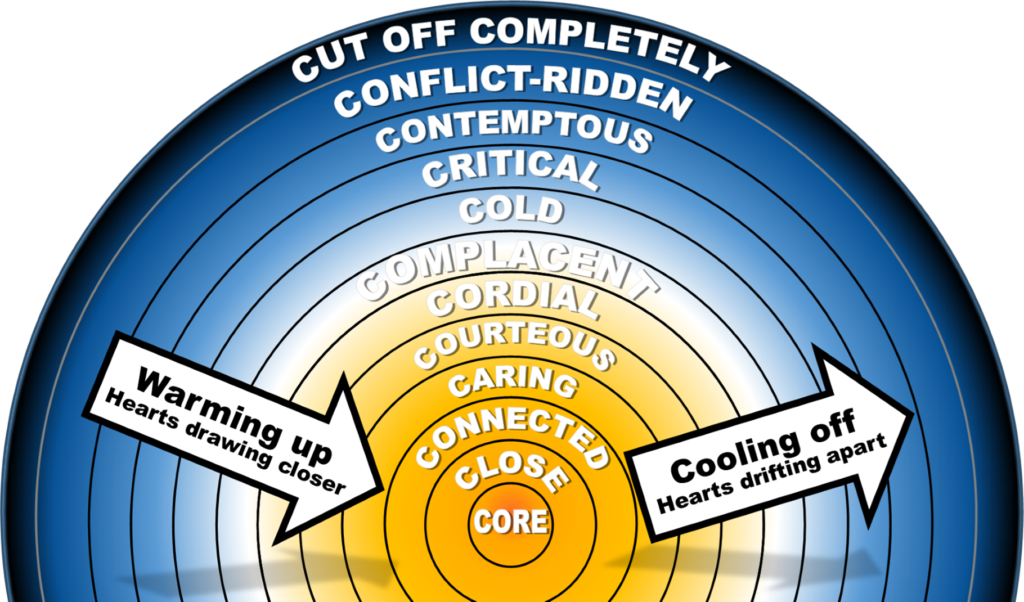 To varying degrees, relationships can feel warm and intimate or they can feel chilly and estranged. I’ve created this graphic to illustrate the wide range of “relational temperatures” that we might experience.
To varying degrees, relationships can feel warm and intimate or they can feel chilly and estranged. I’ve created this graphic to illustrate the wide range of “relational temperatures” that we might experience.
Healthy relationships involve warm connections with others; these are represented by the six “yellow zones” of my illustration. We engage intimately in the center zones with just a few people; there are more people–with less intimacy– in each subsequent circle. Regardless of the amount of closeness, intimacy, and warmth, all of these yellow-zone relationships are healthy.
Unfortunately, we are sinful people who don’t always get relationships right. Our brokenness affects all areas of life, including how we interact with others.
Unhealthiness exists when relationships operate in the blue zones. A relationship that includes cold-shouldering, hostility, or shunning can be crushing, especially when it involves family and friends. The biblical story of Jacob and Esau and the account of Joseph and his brothers illustrate the pain that comes from living in these circles. Such pain can sometimes last for generations!
The pain caused by blue-zone relationships keeps us counselors in business.
Almost all of us would prefer to relate with others in the yellow zones; only the seriously dysfunctional would want their relationships devoid of warmth.
All relationships have a temperature, but as with the weather, temperatures can either warm up or cool off. So let’s look at some things that might cause variations in relational temperatures.
List 1. What may help relationships Warm Up?
- Listening for understanding
- Pursuing clarity
- Seeking reconciliation
- Assuming goodwill
- Heartfelt apologies
- Forgiveness
- Humility
- An “others orientation”
- Expressions of love and care
- Being fully present, staying engaged
- Mutual respect
- Making others feel safe
- Acts of kindness
- Choosing to be unoffendable
List 2. What may cause relationships to Cool Off?
- Poor communication
- Withholding the benefit of the doubt
- Assuming ill-will
- Making assumptions
- Judging motives
- Stereotyping
- Victim mentalities
- Resentment, bitterness, and unforgiveness
- Seeking revenge or retribution
- Prejudice, condescension, judgmentalism, –any of the “isms”
- Selfishness, greed, and pride
- Withdrawing or stonewalling
- Inattentiveness
- Anger, out-of-control emotions
- Exaggerations using “always” and “never”
- Fear, intimidation
Doing more of the things on list 1 above and doing less of the things on list 2 ought to warm up any relationship. It’s worth noting that all of the “one another” passages in Scripture would fall under list 1. The church is to be a place of exceptional warmth!
But even so, there is no guarantee that things will always be warm with our families, friends, and churches. Some things remain out of our control. In Part 2 on this topic, I will talk about how to handle it when coldness remains in a relationship even after doing your part.
Leave a Reply